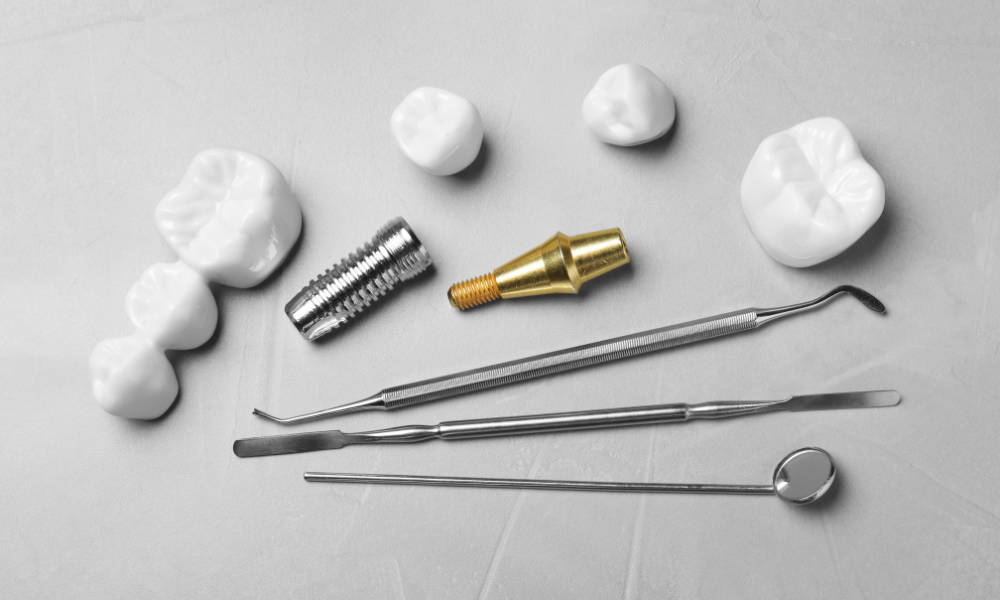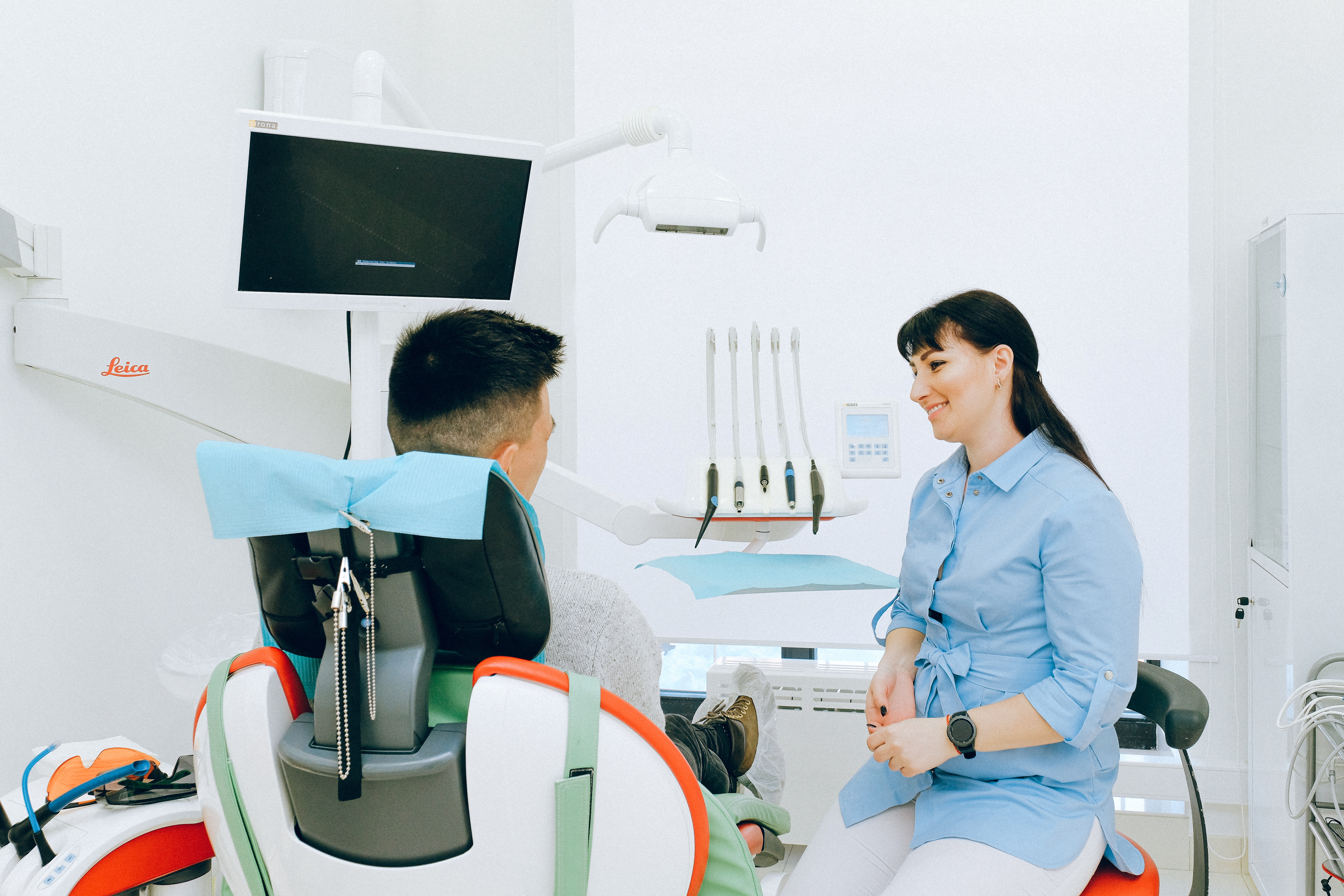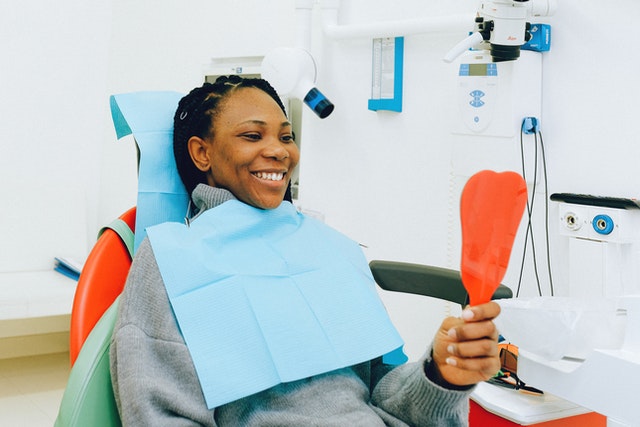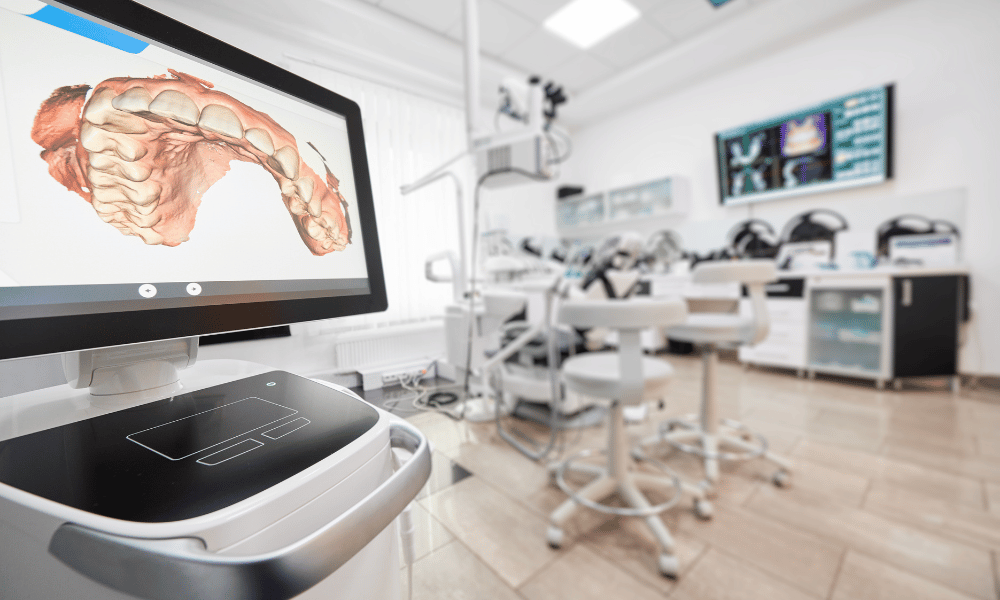October 26, 2023


Written by:
Greg Schubert
Multi-unit abutments offer a versatile and efficient solution for complex restorative cases involving multiple dental implants. These specialized components are crucial in implant restoration success, such as bridges and overdentures, by making them aligned and stable, all while making the implants look good. When providing your patients with durable and aesthetic solutions for missing teeth, it is essential you understand what goes into the different types of abutments dental work and how it can help your patients.
An abutment connects a dental prosthetic (such as a crown) to a dental implant (typically a post made of titanium) inserted into a hole drilled into the jawbone. Once in position, it takes several months for the post to be stable enough to act as the root for the tooth and the abutment to connect the dental prosthetic.
The abutment is made from materials like gold, stainless steel, or titanium, although a ceramic abutment is popular for patients wanting a more natural look. The only drawback is that the compressive strength is less strong than traditional metal materials, which is primarily an issue for implants in posterior molar areas where there is more chewing.
A multi-unit abutment (MUA) is different from a regular abutment. An MUA is a specialized abutment commonly used with zygomatic dental implants and full arch replacements (all-on-four dental implants). A multi-unit abutment addresses cases where two or more dental implants are placed near each other, typically when replacing multiple missing teeth in a row.
Multi-unit abutments are pivotal in enhancing the overall experience and outcomes for patients undergoing all-on-four dental implant surgeries. These components come in various sizes and angulations depending on the patient's needs and the type of dental implant used. The available angulations, which commonly include 0°, 17°, 30°, and 45°, with specialty sizes such as 52.5° and 60° in some cases, allow for a remarkable degree of flexibility during the placement of all-on-four implants.
One of the key benefits of multi-unit abutments is their ability to address slight misalignments in a patient's teeth. When these misalignments exist, strategically placing different MUAs with varying angles can level off the restoration, ensuring a more harmonious and natural-looking implant.
Height disparities in the jaw can also pose challenges when it comes to implants, and MUAs allow for the adjustment of abutment heights. With variations in implant heights, you can position lower implants above the gum tissue, while taller abutments can be placed deeper into the bone. This precision in aligning abutment heights creates a polished aesthetic appearance and evenly distributes any force exerted on the restoration from eating and speaking. Additionally, this height balance contributes to the longevity of the restoration, so patients have a durable and long-lasting solution for their dental needs.
MUA dental components are important in the latter stages of full-arch implant treatment, where the focus shifts from surgical implant placement to prosthetic considerations. They are introduced into the treatment process after the implant sites have fully healed and are ready for permanent restoration. The first step is the removal of the healing abutment, a temporary component placed over the implant during the healing phase. These temporary abutments are easily accessible for removal due to the design of MUAs. Once removed, you select the appropriate MUA based on factors like the desired angle and height for the restoration and place the chosen MUA onto the implant.
The following phase is critical, as it is where the fit and alignment of the MUA are verified. Precise fit is significant to the success of the restoration, and you should make any necessary adjustments at this stage. It is best to check the MUA is fitting precisely by using an oral impression or dental scan to capture precise data about the placement and the surrounding structures.
This data is instrumental in designing and manufacturing the prosthetic restoration. This process can take the form of modifying an existing denture or bridge to convert it into an implant-supported prosthesis where the MUA is an attachment point or crafting a new restoration from scratch to fit onto the MUAs. When the prosthetic restoration is ready, it is securely attached to the multi-unit abutments, ensuring stability, functionality, and aesthetics.
The choice between direct implant attachment and MUA utilization impacts the overall success of the treatment, influencing factors like fit, strength, esthetics, and the long-term health of surrounding tissues. Therefore, properly placing and utilizing MUAs in the treatment process is paramount in delivering high-quality implant-supported restorations to your patients.
Utilizing abutments for implant dentistry brings forth a multitude of advantages. One of the best advantages lies in the capacity to correct implant angulation. In cases where dental implants aren't perfectly aligned, MUAs can reposition them for a natural appearance and optimal functionality for the final prosthesis. MUAs also enable the placement of screw access holes in better locations, making the restoration process go a lot more smoothly.
Another advantage is that the design of MUAs allows for clear visualization of prosthetic connections, leading to precise impressions. This improved accuracy translates into better-fitting restorations that are more comfortable. Additionally, the smaller screw access holes enhance aesthetics and simplify the task of managing the prosthesis by reducing the amount of material needed.
Due to MUAs establishing a level restorative platform among multiple implants, there is more of a uniform height and alignment among the abutments. It makes the implant's creation easier and contributes to long-term soft tissue maintenance around the implant sites. When replacing or adjusting the prosthesis, MUAs are easy to remove, causing minimal disturbance to surrounding soft tissues and minimizing patient discomfort.
Overall, an implant multi-unit abutment is a game-changer in dentistry with many benefits, such as streamlining procedures, enhancing restoration quality, and improving patient experiences. From correcting implant angulation to ensuring predictable impression accuracy and simplifying restoration removal, MUAs are indispensable tools for anyone looking to provide top-notch implant-supported prosthetic solutions.
As the field continues to evolve, education is the heartbeat of success in dentistry today. The more you learn about the best ways to help your patients with their teeth, the more important it is to collaborate with cutting-edge dental labs with state-of-the-art facilities. Working with a dental lab focused on building the best dental prosthetics is vital in giving your patients the best dental work, from implants to mouth guards. With our expertise and dedication to excellence, working with industry leaders like PRO-Craft Dental Laboratory lets you provide the best possible care for your patients.
Connect with us at Pro-Craft Dental Laboratory today to give your patients the highest aesthetic anterior restorations and premium removable products or to handle more complex implant cases.

Elevate your dental practice with our innovative 3-step TRIAD Diagnostic Wax-up process. Our dental diagnostic wax-up is a powerful communication tool that bridges the gap between patients, dentists,...
Read More
Take Esthetics To The Next Level Jun 06, 2017 Why Did You Choose The Field Of Dentistry? Are You Satisfied With Your Results? As a valued client of PRO-Craft Dental Lab we want to share with you an...
Read More
Staying ahead of all new technology in dentistry is necessary for any dental practitioner. As we step into 2025, integrating cutting-edge technology is no longer optional—it’s a necessity. Staying...
Read More